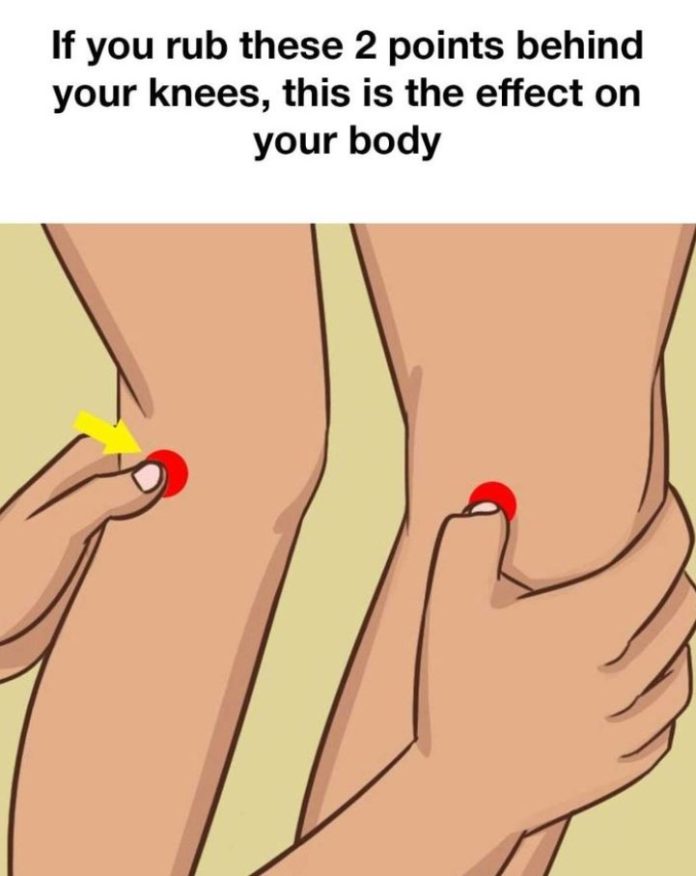Joint stiffness and back pain are common issues faced by many, particularly among older adults. While pharmaceuticals can offer relief, many are hesitant to rely on synthetic medications due to potential side effects and long-term consequences.
Fortunately, ancient practices like acupressure provide a natural alternative that taps into the body’s innate healing abilities. Let’s explore how acupressure and other simple techniques can help alleviate discomfort and promote overall well-being.
Understanding Acupressure
Acupressure is an age-old healing technique rooted in traditional Chinese medicine. It involves applying pressure to specific points on the body to stimulate its self-healing mechanisms. According to Acupressure.com, this practice can enhance blood circulation, induce deep relaxation, and reduce muscle tension. As our bodies age, finding gentle, effective ways to ease discomfort becomes increasingly important.
Key Acupressure Points for Relief
Two acupressure points that can significantly help with stiffness are GB34 and ST36. Michael Reed, an expert in reflexology, highlights these points as particularly effective.
- GB34 (Gallbladder 34): This point is located on the outer leg, just below the knee and slightly in front of the outer leg bone. To find it, measure four finger widths below the kneecap and one finger width outside the leg. Massaging this area vigorously on a daily basis can alleviate stiffness and may also help with conditions such as jaundice, nausea, and hip pain.
- ST36 (Stomach 36): Located four finger widths below the kneecap and one finger width towards the inside of the leg, this point is another powerhouse for reducing discomfort. It’s known to improve digestion, alleviate fatigue, and even ease menstrual cramps. Regular pressure on ST36 can lead to significant improvements in overall muscle function and energy levels.
Additional Techniques to Alleviate Stiffness
While acupressure is highly beneficial, there are other strategies to help combat stiffness:
- Maintain a Regular Sleep Schedule: Consistent sleep patterns allow the body to recover and repair. Ensure that your sleeping environment is warm and free from drafts, as cold temperatures can exacerbate muscle tension.
- Warm Showers: Taking a hot shower can help relax stiff muscles, improve circulation, and prepare the body for a restful sleep. The heat encourages blood flow, which aids in the healing process.
- Gentle Stretching and Movement: Incorporating light stretching into your daily routine can prevent stiffness and maintain flexibility. Activities like yoga or tai chi can enhance mobility and promote relaxation.
- Stay Hydrated: Proper hydration is essential for muscle function. Drinking plenty of water supports circulation and helps reduce muscle cramps and stiffness.
- Nutrition Matters: A balanced diet rich in anti-inflammatory foods—such as fruits, vegetables, nuts, and fatty fish—can significantly impact joint health. Foods high in omega-3 fatty acids, like salmon and walnuts, are particularly beneficial.
The Mind-Body Connection
It’s essential to recognize that mental well-being plays a significant role in physical health. Stress and anxiety can contribute to muscle tension and exacerbate discomfort. Practices such as meditation, mindfulness, or simply spending time in nature can provide relief and promote a holistic sense of health.
Conclusion :
As we navigate the challenges of aging, exploring natural remedies like acupressure empowers us to take charge of our health and well-being. The beauty of practices such as acupressure lies not only in their physical benefits but also in their holistic approach to wellness. By stimulating specific pressure points, like GB34 and ST36, we can enhance our body’s natural healing processes, leading to profound relief from stiffness and discomfort.
Moreover, the incorporation of simple lifestyle adjustments—like maintaining a consistent sleep schedule, enjoying warm showers, engaging in gentle stretching, staying hydrated, and focusing on anti-inflammatory nutrition—can create a supportive environment for recovery and resilience. These strategies work synergistically to improve circulation, reduce tension, and promote relaxation, ultimately contributing to a better quality of life.
In essence, embracing these natural remedies not only alleviates physical discomfort but also fosters a deeper connection between our body and mind. It reminds us that our well-being is a multifaceted journey, enriched by self-care practices that honor our body’s innate wisdom. By prioritizing these holistic approaches, we can cultivate a sense of vitality and resilience, empowering ourselves to lead healthier, more active lives. As we discover the potential of these ancient techniques, we not only unlock relief but also embrace a path toward enduring wellness and balance.










